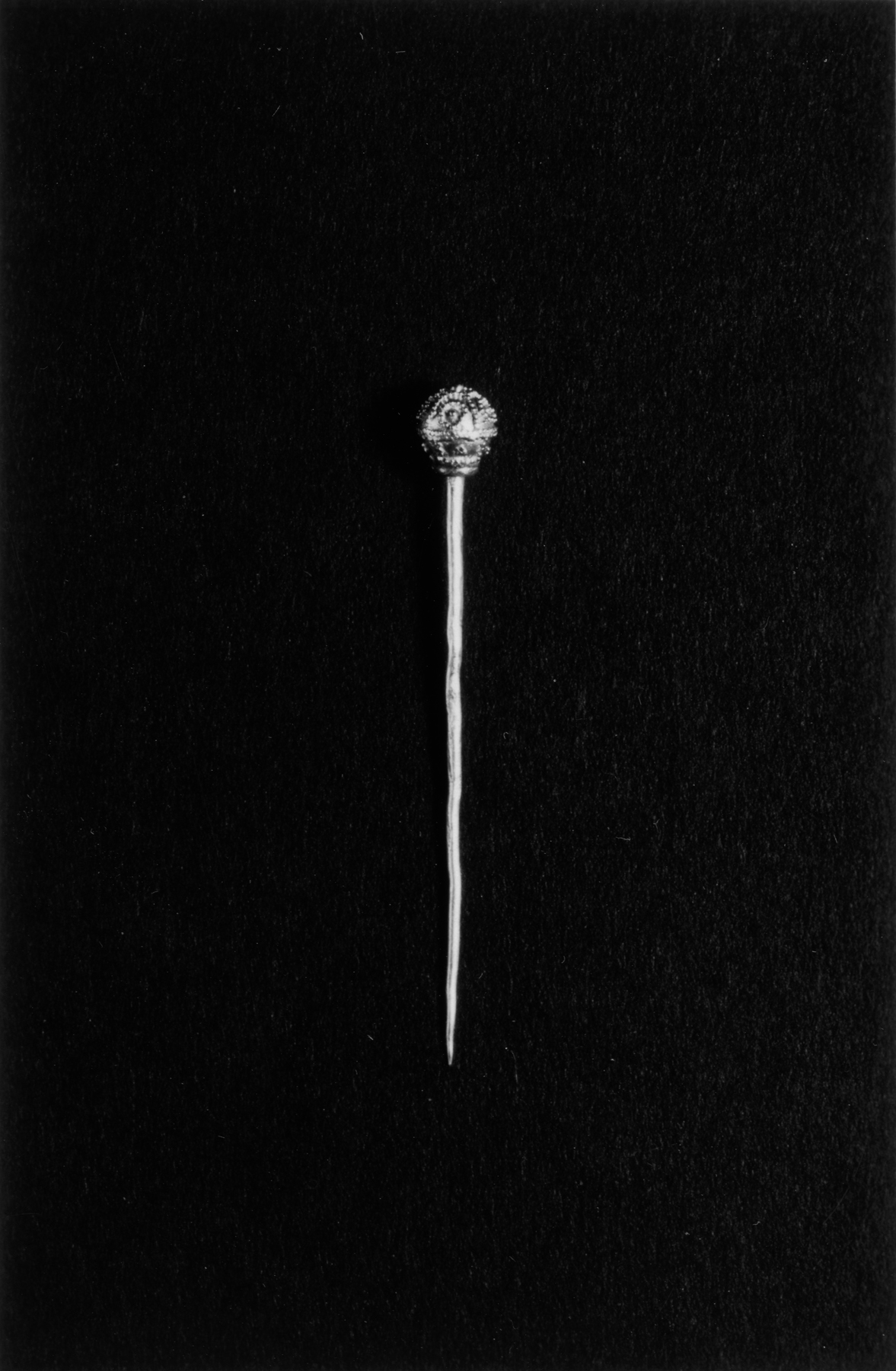Pin with Granulation
Pins were an integral part of the Etruscan wardrobe. Sculpture and vase painting indicate that pins were worn on the shoulders alone or in pairs to fasten a cloak. This delicate pin's globe is decorated with granulation, a technique in which tiny balls of gold are fused to the metal surface to create a decorative pattern.
Provenance
Provenance (from the French provenir, 'to come from/forth') is the chronology of the ownership, custody, or location of a historical object. Learn more about provenance at the Walters.
Joseph Brummer, New York [Yugoslavian treasure]; Henry Walters, Baltimore, Joseph Brummer, Paris and New York, [date and mode of acquisition unknown] [as part of the so-called "Jugoslavian Treasure"]; Henry Walters, Baltimore, 1927, by purchase; Walters Art Museum, 1931, by bequest.
Exhibitions
| 2010 | Bedazzled: 5,000 Years of Jewelry. El Paso Museum of Art, El Paso. |
| 2006-2009 | Bedazzled: 5,000 Years of Jewelry from the Walters Art Museum. Frist Center for the Visual Arts, Nashville; The John and Mable Ringling Museum of Art, Sarasota; The Walters Art Museum, Baltimore. |
| 1979-1980 | Jewelry - Ancient to Modern. The Walters Art Gallery, Baltimore. |
Geographies
Italy (Etruria) (Place of Origin)
Measurements
H: 2 9/16 in. (6.5 cm)
Credit Line
Acquired by Henry Walters, 1927
Location in Museum
Not on view
Accession Number
In libraries, galleries, museums, and archives, an accession number is a unique identifier assigned to each object in the collection.
In libraries, galleries, museums, and archives, an accession number is a unique identifier assigned to each object in the collection.
57.473




